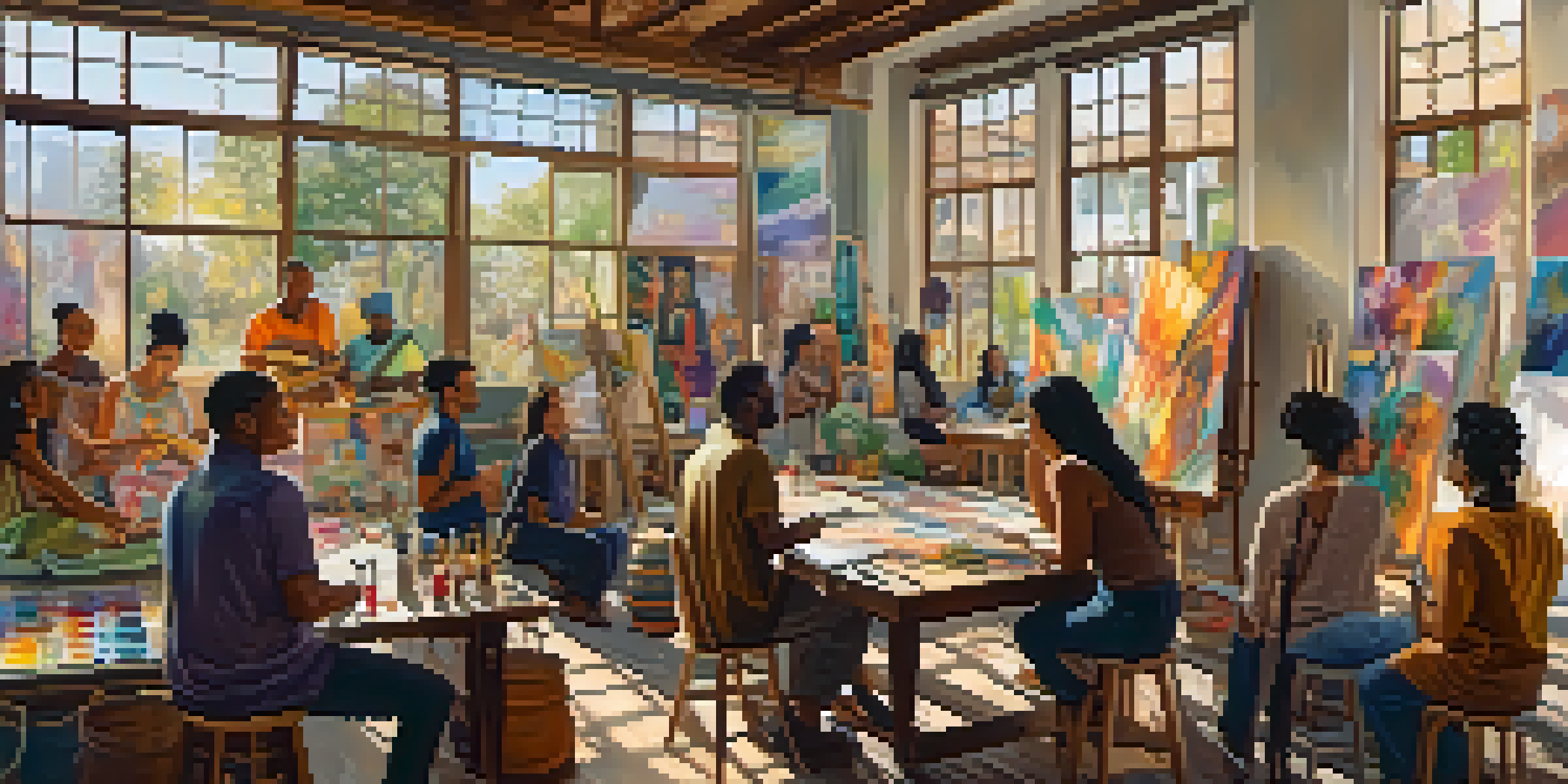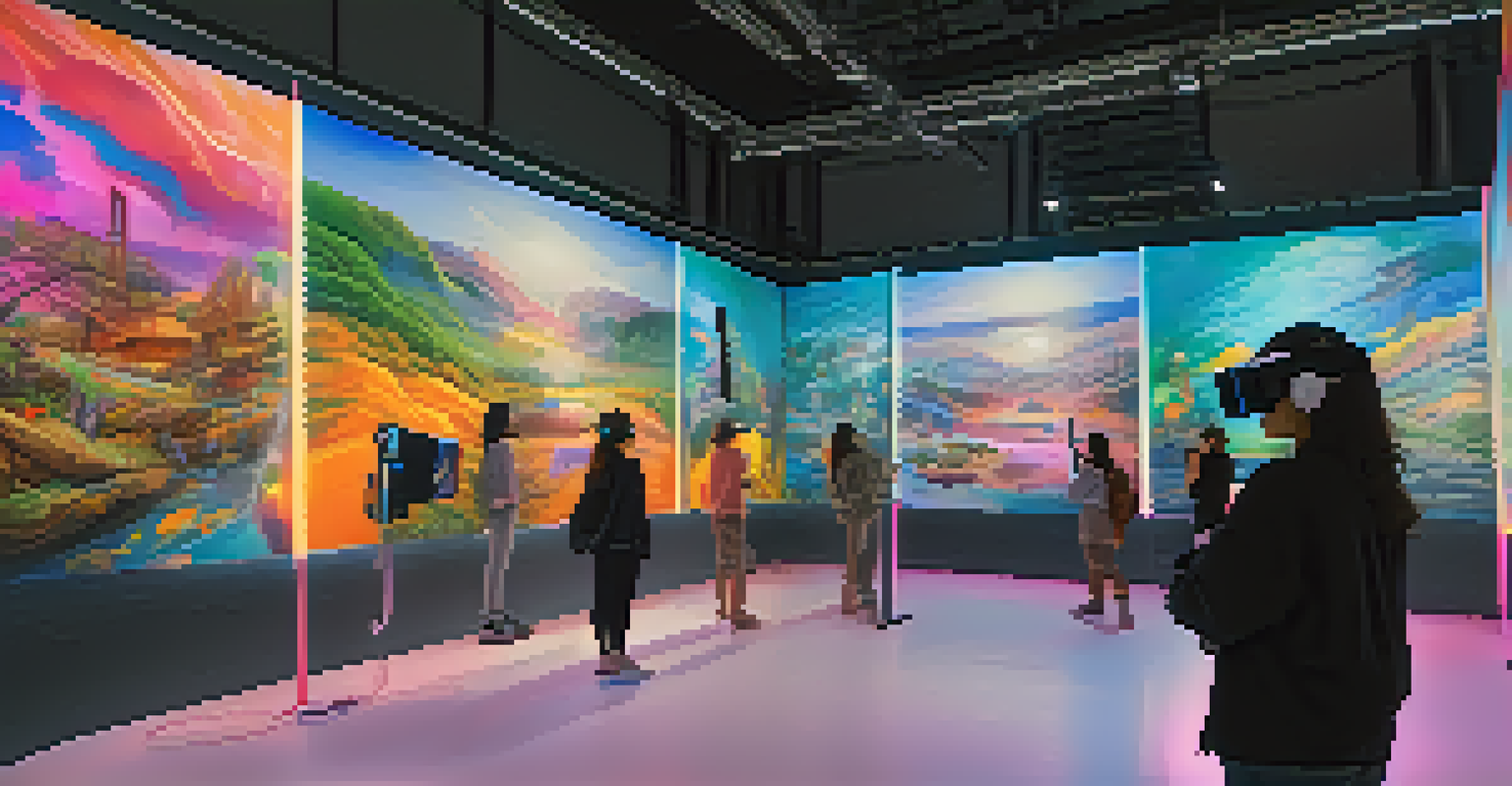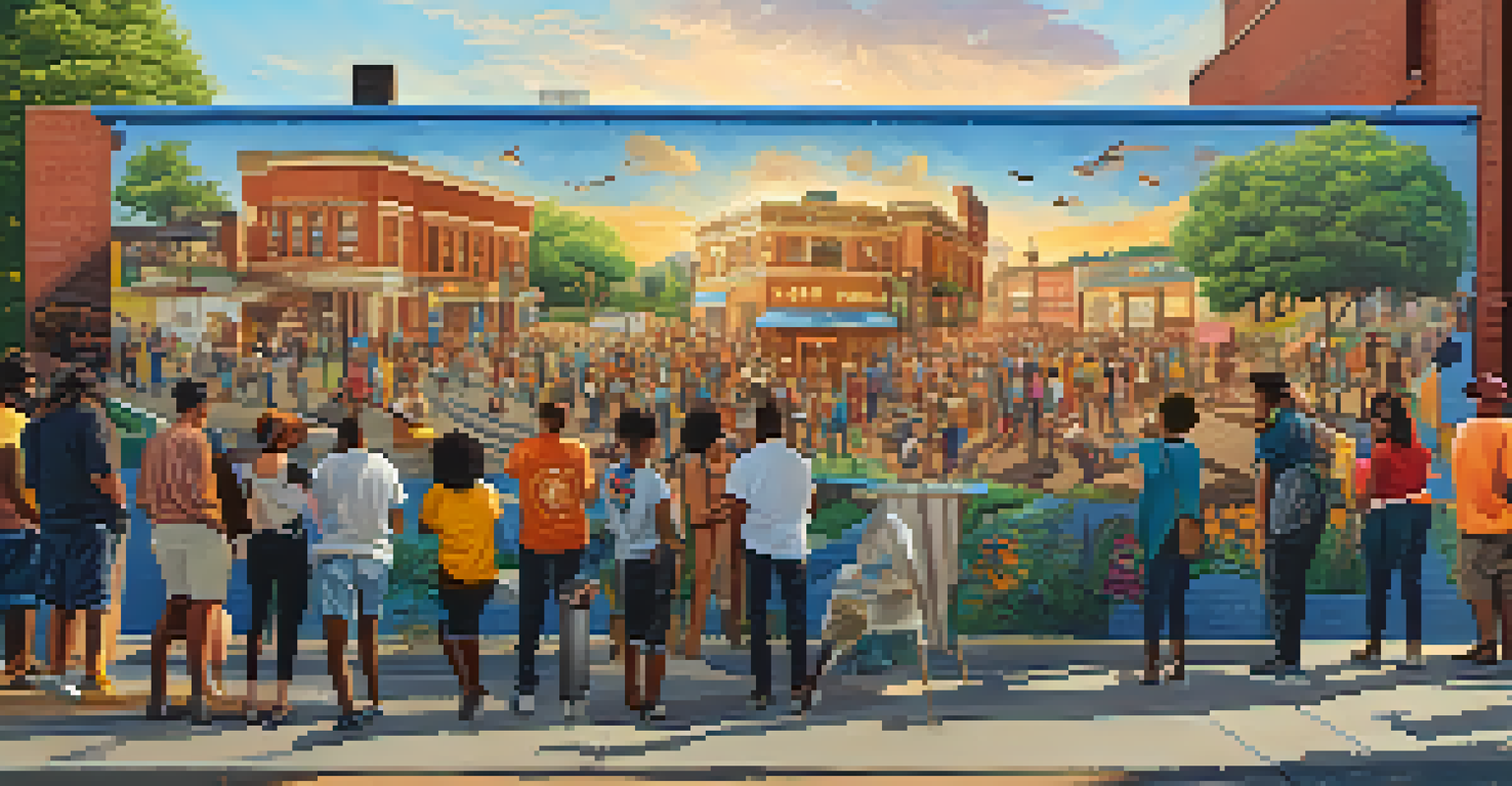Artistic Collaborations: Merging Different Cultures and Styles

Understanding Artistic Collaborations Across Cultures
Artistic collaborations are a fascinating way to combine different cultures and styles, creating something unique and vibrant. These partnerships often emerge when artists from diverse backgrounds come together, sharing their perspectives and techniques. For instance, a painter might collaborate with a musician to create a multimedia artwork that incorporates sound and visual elements, enriching the overall experience.
Art is the most beautiful of all lies.
Such collaborations not only enhance the creative output but also foster a deeper understanding and appreciation of each other's cultural heritage. By engaging in this exchange, artists can break down barriers and challenge stereotypes, ultimately promoting inclusivity. This cultural synergy leads to innovative art forms that resonate with a broader audience.
Moreover, these collaborations can spark conversations about identity, history, and the human experience. For example, a project that combines traditional African dance with contemporary hip-hop not only showcases the beauty of both styles but also encourages discussions about cultural evolution. Through these dialogues, art becomes a powerful tool for social change and connection.
The Role of Technology in Artistic Collaborations
In today's digital age, technology plays a pivotal role in facilitating artistic collaborations across borders. Artists can now connect with peers worldwide through social media, online platforms, and collaborative tools, making it easier than ever to share ideas and resources. This technological advancement has opened up a realm of possibilities for creativity and innovation.

For instance, virtual reality (VR) and augmented reality (AR) have transformed how artists collaborate, allowing them to create immersive experiences that transcend traditional art forms. Imagine a virtual gallery where artists from different continents showcase their work simultaneously, inviting viewers to engage with diverse cultural narratives. This not only broadens the audience but also enhances the collaborative process.
Art Fosters Cultural Understanding
Artistic collaborations enhance creativity and promote inclusivity by merging diverse cultural perspectives.
However, while technology can bridge gaps, it can also pose challenges. The reliance on digital tools may sometimes lead to a disconnect from traditional practices and local contexts. Therefore, it's essential for artists to strike a balance, integrating technology while honoring the roots of their cultural expressions.
Exploring Successful Artistic Collaborations
Throughout history, numerous successful artistic collaborations showcase the beauty of merging different cultures and styles. One notable example is the collaboration between Japanese artist Yayoi Kusama and the fashion brand Louis Vuitton, which blended Kusama's iconic polka dot patterns with luxury fashion. This partnership not only highlighted the intersection of art and commerce but also brought attention to Japanese culture on a global scale.
Creativity is contagious, pass it on.
Another remarkable example is the fusion of Indian classical music with Western jazz, creating a unique sound that resonates with audiences worldwide. Artists like Ravi Shankar and John Coltrane have demonstrated how blending different musical traditions can lead to groundbreaking compositions. This fusion not only celebrates diversity but also enriches the global music landscape.
These examples reveal how artistic collaborations can breathe new life into established genres, encouraging experimentation and creativity. By drawing inspiration from one another, artists can push boundaries and explore uncharted territories, ultimately enriching the artistic community.
Cultural Sensitivity in Artistic Collaborations
While artistic collaborations can be incredibly enriching, they also require a level of cultural sensitivity. Artists must be mindful of the cultural contexts they are engaging with, ensuring that their collaborations are respectful and authentic. This involves understanding the nuances of different cultures and avoiding appropriation, which can lead to misunderstandings and hurt feelings.
For example, when incorporating elements from another culture, it's essential to acknowledge the source and give credit where it's due. This not only honors the original cultural expressions but also fosters trust and respect among collaborating artists. Open dialogue and genuine engagement are key components in navigating these sensitive waters.
Technology Enhances Collaboration
Digital tools and platforms facilitate global artistic partnerships, allowing for innovative and immersive experiences.
By prioritizing cultural sensitivity, artists can create meaningful collaborations that celebrate and uplift diverse voices. This approach not only enriches the artistic process but also cultivates a sense of community and shared purpose among artists from different backgrounds.
The Impact of Artistic Collaborations on Society
Artistic collaborations have a profound impact on society, often serving as a catalyst for social change and cultural dialogue. When artists from different backgrounds come together, they create works that challenge societal norms and provoke thought. These collaborations can address pressing issues such as inequality, discrimination, and environmental concerns, sparking conversations that resonate with audiences.
For instance, community-driven art projects that involve local artists and residents can foster a sense of belonging and empowerment. By collaborating on public murals or installations, these artists can reflect the community's identity and address its challenges. This not only beautifies the surroundings but also strengthens social bonds and encourages collective action.
Moreover, the visibility of diverse artistic collaborations can inspire future generations of artists to embrace their cultural heritage and explore new creative avenues. By showcasing the power of collaboration, these projects encourage a more inclusive and representative art world, ultimately enriching our shared cultural narrative.
Challenges in Artistic Collaborations
Despite the many benefits, artistic collaborations can come with their own set of challenges. Differences in communication styles, creative visions, and cultural backgrounds can lead to misunderstandings and conflicts. It's crucial for artists to establish clear expectations and open lines of communication from the start to navigate these potential hurdles.
Additionally, power dynamics can play a significant role in collaborative partnerships. Artists from minority backgrounds may feel overshadowed or undervalued in collaborations with more established figures. Ensuring that all voices are heard and respected is vital for fostering a successful and equitable creative process.
Cultural Sensitivity is Essential
Respecting cultural contexts is crucial in collaborations to avoid appropriation and foster genuine artistic connections.
By acknowledging these challenges, artists can work together more effectively, finding common ground and leveraging each other's strengths. This collaborative spirit not only enhances the creative output but also builds lasting relationships that can lead to future projects and innovations.
Future Trends in Artistic Collaborations
As the world becomes increasingly interconnected, the future of artistic collaborations looks promising. We can expect to see more cross-cultural partnerships that challenge traditional norms and push the boundaries of creativity. With the rise of global issues such as climate change and social justice, artists will likely come together to address these challenges through their work.
Emerging technologies will also play a vital role in shaping the future of artistic collaborations. Virtual and augmented reality will continue to evolve, enabling artists to create immersive experiences that engage audiences in new ways. This technological advancement will not only enhance creative expression but also foster collaboration among artists from diverse backgrounds.

Ultimately, the future of artistic collaborations will be marked by a spirit of inclusivity and exploration. As artists continue to merge different cultures and styles, we can look forward to a rich tapestry of creativity that reflects our shared humanity.